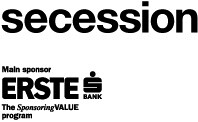Ericka Beckman: Game Mechanics
July 6–September 3, 2017
Friedrichstraße 12
1010 Vienna
Austria
Hours: Tuesday–Sunday 10am–6pm
T +43 1 587530710
F +43 1 587530734
presse@secession.at
Press conference: July 5, 10am
Artist talk: Alex Da Corte in conversation with Kim Nguyen: July 5, 6–7pm
An event of the Friends of the Secession (in English)
Alex Da Corte
Slow Graffiti
US-American artist Alex Da Corte creates videos, sculptures, paintings, and immersive installations with a striking cinematic quality. The engagement with the complexity of human experience is central to his work, for instance when he explores and exposes questions of desire, sensuality, and alienation. Here the artist examines both cultural and psychological aspects, as well as the uncertainty that manipulated and repurposed everyday objects possess, making space for a state of deception and illusion. When Da Corte re-explores the formal potential of artefacts of consumer culture, he transforms their original functions and meanings so they can unfold new symbolic power—now as sculptural objects in his videos and installations, for example. Evidently, colour and textures are used with great skill to affect viewers and the mood in which they experience the artist’s environments once they set foot in them.
Slow Graffiti, Alex Da Corte’s new work conceived especially for the Secession, consists of a 12-minute video (a reference to Oscar Wilde’s Picture of Dorian Gray) and a lush installation. Velvet-cladded walls and a patchwork carpet that covers the floor with its template pattern give the setting a soft touch. Structured with architectural elements, sculptural objects, paintings, and makeshift furniture are scattered throughout the room. Immersed in coloured light, Slow Graffiti radiates an atmosphere of softness, vulnerability, mutability, and transience—like the verve of an invisible city, one that exists only in someone’s imagination but that takes shape here.
Alex Da Corte, born in 1980 in Camden (New Jersey, USA), lives and works in Philadelphia.
Ericka Beckman
Game Mechanics
The film and video works of US-American artist Ericka Beckman focuses on games and sport competitions and their rules as well as featuring the playing field as an allegory for the development and maintenance of socio-cultural norms.
Today, Beckman is recognised as an important representative of the so-called picture generation. In the 1970s she studied in John Baldessari’s Post Studio class at the famous Cal Arts in Los Angeles. New York’s No Wave scene with their cross-over mediums strongly influenced her as did the work of Jean Piaget, the cognitive development psychologist.
Beckman’s films are generally structured like games. The narrative develops out of the subject matter: accumulation, competition and the organisation of thoughts and memories by means of rules, symbols and symbolic thought. The protagonists are not actors but act as players. In the process the artist reflects on new and emerging technical advancements such as virtual reality, artificial intelligence and computer games, something she has done from very early on in their development.
Beside her iconic film installation You The Better (1983/2015) and a number of drawings, Beckman will show a new version of her film Tension Building (2016) at the Secession, which is dedicated to college football, the linkage between sport and the armed forces and the basic structure of experiences. It has been updated by the artist against the backdrop of the last US election to bring out a critic of the spectacle in American culture.
Ericka Beckman, born in 1951 in Hempstead (New York, USA), lives and works in New York City.


